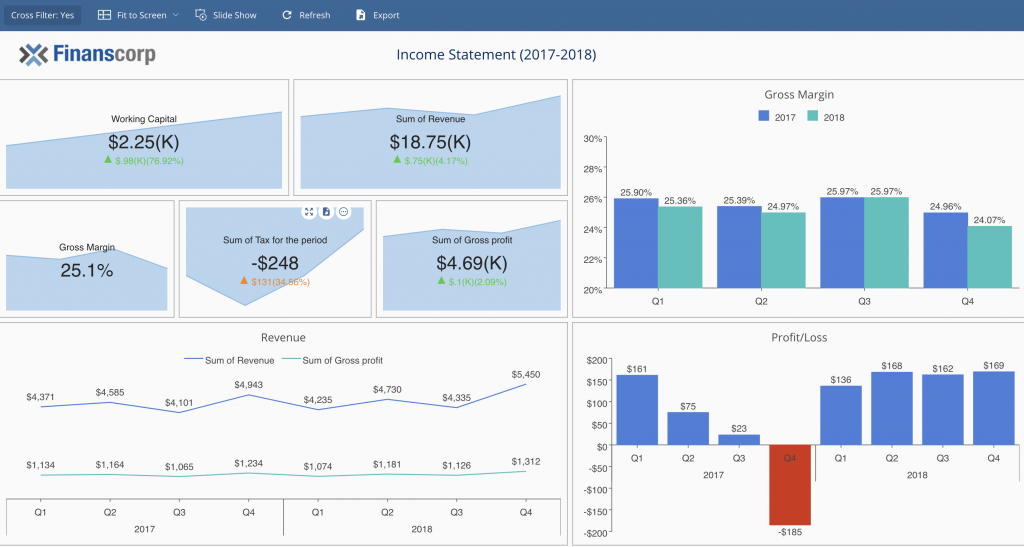Whose Insurance Pays in a Multi-Car Accident?
When the unfortunate event of a multi-car accident occurs, the question of who is responsible and whose insurance will cover the damages can become a puzzle. Determining liability and insurance coverage in such scenarios can be complex, but understanding the basics can help you navigate the process more smoothly.
Understanding Insurance Liability in Multi-Car Accidents
In a multi-car accident, liability refers to the determination of which driver is at fault. Depending on the jurisdiction, various factors are considered, such as traffic laws, driver behavior, and the specific circumstances of the accident. Typically, the driver who is considered negligent or at fault will be held liable for the damages caused to other vehicles and individuals involved.
Determining Fault and Insurance Coverage
Once liability is established, the next step is to determine whose insurance will cover the damages. In most cases, the insurance company of the at-fault driver will be responsible for providing coverage. This is known as "fault-based insurance."
However, there are exceptions to this rule. In some states, such as Florida, a "no-fault" insurance system is followed. Under a no-fault system, drivers involved in an accident must file claims with their own insurance companies, regardless of fault.
Scenarios and Insurance Coverage
Let’s consider a few scenarios to illustrate how insurance coverage is determined in multi-car accidents:
- In a two-car accident where one driver is clearly at fault, the other driver’s damages will be covered by the at-fault driver’s insurance.
- If three cars are involved in an accident and two drivers are found to be at fault, the insurance companies of both at-fault drivers will typically share the coverage for the damages.
- In a no-fault state, if two cars are involved in an accident, each driver’s insurance company will pay for the damages to their own vehicle and any medical expenses incurred by their insured driver or passengers.
Additional Coverage to Consider
In addition to liability insurance, it’s important to consider the following types of coverage:
- Collision coverage: Covers damages to your own vehicle, regardless of fault.
- Uninsured/underinsured motorist coverage: Protects you if the at-fault driver is uninsured or underinsured.
- Personal injury protection (PIP): Covers medical expenses and lost wages for you and your passengers, regardless of fault.
Tips for Navigating Multi-Car Accident Insurance Claims
- Stay calm and document the scene, including photos and witness information.
- Contact your insurance company promptly.
- Cooperate with the insurance adjuster but don’t admit fault.
- Obtain a copy of the police report, if available.
- Seek legal advice if necessary.
Remember, insurance coverage in multi-car accidents can be complex. Understanding the basics and consulting with your insurance company can help you navigate the process efficiently and protect your interests.
Determining Insurance Coverage in Multi-Car Accidents
In the aftermath of a multi-vehicle crash, the question of whose insurance pays for damages can be a daunting one. To navigate this complex landscape, understanding the factors that influence insurance coverage is crucial.
Factors Influencing Insurance Coverage
Several key elements shape the determination of liability and compensation in a multi-car accident. These include:
-
Fault and Negligence: Identifying who caused the accident is essential. Negligence, such as texting while driving, speeding, or reckless behavior, often determines fault and, consequently, the responsible insurance company.
-
Comparative Negligence: In some jurisdictions, multiple parties may share the blame. In these cases, insurance companies compare degrees of negligence to determine the proportionate compensation each should cover.
-
Insurance Policy Coverage: The type and limits of the involved drivers’ insurance policies can impact coverage. Liability coverage protects against damages caused by the policyholder’s negligence, while collision coverage covers the policyholder’s own vehicle damages regardless of fault.
Determining the Liable Party
Establishing fault is critical in determining insurance coverage. When a clear at-fault party is identified, their insurance company typically bears the primary responsibility for covering damages. However, in cases where multiple vehicles are involved, assigning fault can be complex.
Complex Fault Determination
In scenarios where it’s unclear who caused the crash, investigating officers and insurance adjusters meticulously examine evidence such as witness statements, traffic camera footage, and vehicle damage patterns. They analyze factors like speed, braking distances, and evasive maneuvers to reconstruct the accident and assign fault.
Contributory Negligence
In some cases, multiple drivers may contribute to the accident. For instance, one driver may be speeding, while another driver abruptly changes lanes. In such situations, the insurance companies compare the degrees of negligence and determine each party’s proportionate share of financial responsibility.
Policy Coverage and Limitations
The terms and limits of the involved drivers’ insurance policies play a significant role in coverage. Liability coverage, which pays for damages caused to others, is mandatory in most jurisdictions. However, the amount of coverage varies widely. Higher coverage limits can provide greater protection, but they also come with higher premiums.
Collision coverage, which pays for damages to the policyholder’s own vehicle, is optional in most states. If a driver does not have collision coverage and is deemed at fault, they will be personally responsible for the cost of repairing or replacing their vehicle.
Whose Insurance Pays in a Multi-Car Accident?
In the aftermath of a multi-car accident, a common question arises: whose insurance pays? Determining liability in such scenarios can be complex, and insurance policies vary in their coverage. Here’s a comprehensive guide to help you navigate the insurance landscape after a multi-car crash.
Determining Fault
Establishing fault is crucial in determining which insurance company will cover the costs. Traffic laws, witness statements, and damage patterns all play a vital role in assigning blame. Law enforcement officers conduct thorough investigations to gather evidence and file accident reports, which insurance companies use to evaluate the circumstances. Witnesses can provide valuable accounts of the accident, helping to verify the sequence of events and identify potential liability.
Insurance Coverage
Once fault has been determined, the next step is to assess insurance coverage. Most auto insurance policies provide liability coverage, which pays for damages to other vehicles and property if the policyholder is found at fault. Some policies also offer collision coverage, which covers the policyholder’s own vehicle regardless of fault. It’s important to check the specific terms of your policy to determine the extent of your coverage.
Multiple at-Fault Drivers
In multi-car accidents, it’s possible for multiple drivers to share liability. In such cases, each driver’s insurance company may be responsible for covering a portion of the damages based on the degree of fault assigned to each driver. Insurance companies will negotiate with each other to determine the appropriate apportionment of liability.
Determining Payment
The insurance company of the at-fault driver is generally responsible for paying for the damages caused by their client. However, there may be exceptions to this rule, such as when there is a dispute over fault or the coverage limits are insufficient. In some cases, multiple insurance companies may contribute to the settlement, especially when multiple drivers are at fault.
Conclusion
Determining insurance coverage after a multi-car accident can be a complex process. By understanding the factors involved in determining fault, understanding your insurance coverage, and navigating the insurance landscape, you can ensure that your claim is handled fairly and efficiently. Remember, it’s always advisable to seek legal counsel if you have any questions or concerns about your rights and entitlements after a multi-car accident.
Whose Insurance Pays in a Multi-Car Accident?
When two or more cars collide, determining fault can be complex. But who’s on the hook for damages and injuries? It depends on the specific circumstances, but in most cases, each driver’s insurance policy comes into play.
Liability Insurance
Typically, the at-fault driver’s liability insurance kicks in to cover damages and injuries caused to others. This coverage has limits, however, so if the damages exceed those limits, the at-fault driver may be personally liable for the remaining costs.
Coverage Limits and Exclusions
Each driver’s insurance policy comes with its own set of limits and exclusions. These can significantly impact the coverage available for damages and injuries. For instance, some policies may limit the amount of coverage for property damage or bodily injury, while others may exclude certain types of accidents or injuries altogether. It’s crucial to review your policy carefully to understand its specific terms.
Determining Fault
Determining fault in a multi-car accident can be a tricky matter. Police reports, witness statements, and insurance investigations all play a role in assigning responsibility. In some cases, multiple drivers may share fault, which can complicate the claims process.
Comparative Negligence
In many states, comparative negligence rules apply to multi-car accidents. Under these laws, the amount of damages each driver is responsible for is based on their degree of fault. For example, if you’re found to be 30% at fault for an accident, you may be entitled to recover 70% of your damages from the other driver’s insurance policy.
Whose Insurance Pays in a Multi-Car Accident?
Navigating the aftermath of a multi-car accident can be a daunting task, especially when it comes to determining who’s on the hook for damages. The answer often hinges on the specific circumstances of the crash, including the laws governing negligence and insurance in your state.
Fault-Based Insurance Systems
In most states, car insurance companies follow a "fault-based" system. This means that the driver who is found to be at fault for the accident is the one whose insurance will be responsible for covering the damages. Fault is typically determined by law enforcement officers or insurance companies based on factors such as traffic violations, driving behavior, and witness statements.
Contributory Negligence and Comparative Negligence
In some states, contributory negligence rules may bar a driver with any degree of fault from recovering damages. This means that even if you were only slightly at fault for the accident, you may not be able to collect from the other driver’s insurance company.
Other states, however, have adopted comparative negligence rules. Under comparative negligence, each driver’s liability is based on their percentage of fault. For example, if you were found to be 30% at fault for an accident, you could only recover 70% of your damages from the other driver’s insurance company.
Determining Fault
Determining fault in a multi-car accident can be a complex process. Here are some key factors that insurance companies typically consider:
- Traffic violations: Running red lights, speeding, or failing to yield can all be considered evidence of negligence.
- Driving behavior: Distracted driving, tailgating, or driving under the influence of alcohol or drugs can also lead to a finding of fault.
- Witness statements: Eyewitness accounts can be valuable in helping to establish how the accident occurred.
- Property damage: The extent of damage to vehicles and property can provide clues about the severity of the impact and the actions of the drivers involved.
Coverage for Multiple Vehicles
If you are involved in a multi-car accident, there are a few different types of insurance coverage that may come into play:
- Liability insurance: This coverage pays for damages caused to other people or their property.
- Collision insurance: This coverage pays for damages to your own vehicle, regardless of who is at fault.
- Uninsured/underinsured motorist coverage: This coverage protects you if you are hit by a driver who does not have insurance or does not have enough insurance to cover your damages.
What to Do After a Multi-Car Accident
Following a multi-car accident, it’s important to take the following steps:
- Stay calm and call 911: If there are injuries, call for emergency medical assistance immediately.
- Exchange information: Get the names, contact information, and insurance information of all the drivers involved.
- Take photos: Document the scene of the accident, including the damage to the vehicles and any injuries.
- Report the accident: Contact your insurance company to report the accident and start the claims process.
Navigating a multi-car accident can be challenging, but by understanding the basics of insurance coverage and fault determination, you can help ensure that your rights are protected. Don’t wait to contact your insurance company and seek legal advice if necessary.
Whose Insurance Pays in a Multi-Car Accident?
If you’re involved in a multi-car accident, you’re probably wondering whose insurance will cover the damages. The answer isn’t always straightforward, but there are some general guidelines that can help you figure it out.
In most cases of multi-car accidents, the insurance company of the at-fault driver will be responsible for covering the damages. This means that if you’re hit by another car, the other driver’s insurance company should pay for your medical bills, car repairs, and other losses.
Dealing with Multiple Insurance Companies
However, there are some cases where multiple insurance companies may be involved. For example, if you’re in an accident with an uninsured driver, your own insurance company may be responsible for covering your damages. This can also happen if you’re in an accident with multiple vehicles, each of which is insured by a different company.
If you’re involved in an accident with multiple insurance companies, it’s important to contact each company as soon as possible. You’ll need to provide them with information about the accident, including the other drivers involved, the damage to your vehicle, and any injuries you sustained.
Determining Fault
Once the insurance companies have all of the information, they’ll start the process of determining fault. This can be a complex process, especially in cases where multiple vehicles are involved. The insurance companies will need to consider factors such as the police report, witness statements, and the damage to the vehicles.
Coordinating Coverage
Once fault has been determined, the insurance companies will start coordinating coverage. This means that the responsible party’s insurance company will pay for the damages of the other drivers involved in the accident.
In some cases, the responsible party may not have enough insurance coverage to cover all of the damages. In this case, the other drivers involved in the accident may have to file a claim with their own insurance companies.
Getting Help
Dealing with multiple insurance companies can be a challenging process. If you’re having trouble getting your claim resolved, you may want to consider contacting an attorney. An attorney can help you to navigate the insurance process and ensure that you receive the compensation you deserve.
Whose Insurance Pays in a Multi-Car Accident?
In the aftermath of a multi-car accident, the question of who’s responsible for paying for damages can leave victims feeling lost. Determining fault in such complex events requires a thorough understanding of the legalities involved. Generally, the driver who caused the accident is liable, and their insurance company will be responsible for covering the costs. However, in certain situations, multiple parties may share fault, leading to a more complicated claims process.
Determining Fault in Multi-Car Accidents
Establishing who’s at fault in a multi-car accident is crucial for determining which insurance company will be responsible for compensating victims. Factors considered include driver negligence, such as reckless driving, speeding, or running a red light. The police report and witness statements play a significant role in assigning liability.
Coverage Types and Liability
Auto insurance policies typically include various types of coverage that dictate what damages will be covered and for whom. Liability coverage protects the policyholder against claims made by other parties. In a multi-car accident, the at-fault driver’s liability coverage will be used to pay for damages caused to others.
Tips for Handling Insurance Claims in Multi-Car Accidents
- Document the accident thoroughly: Take pictures of the scene, gather witness information, and obtain a copy of the police report.
- Cooperate with investigators: Provide accurate statements to insurance companies and law enforcement to help them determine fault accurately.
- Seek legal counsel if necessary: If the claims process becomes overly complex or disputes arise, consider seeking legal guidance to protect your rights.
- Review your policy thoroughly: Understand your coverage limits and exclusions to ensure you’re fully protected in case of an accident.
- Negotiate with insurance companies: Don’t accept the first settlement offer without carefully reviewing it. Know your rights and negotiate fairly for compensation.
- Consider filing a lawsuit: As a last resort, filing a lawsuit may be necessary if negotiations with insurance companies break down and you believe you’re not being fairly compensated.
- Stay patient and persistent: Insurance claims can take time to resolve. Stay patient and persistent in following up on your claim to ensure a fair outcome.
Remember, the key to navigating insurance claims in multi-car accidents is to stay informed, document everything, and seek professional help when needed. By following these tips, you can protect your rights and ensure you receive fair compensation for your losses.




Leave a Reply